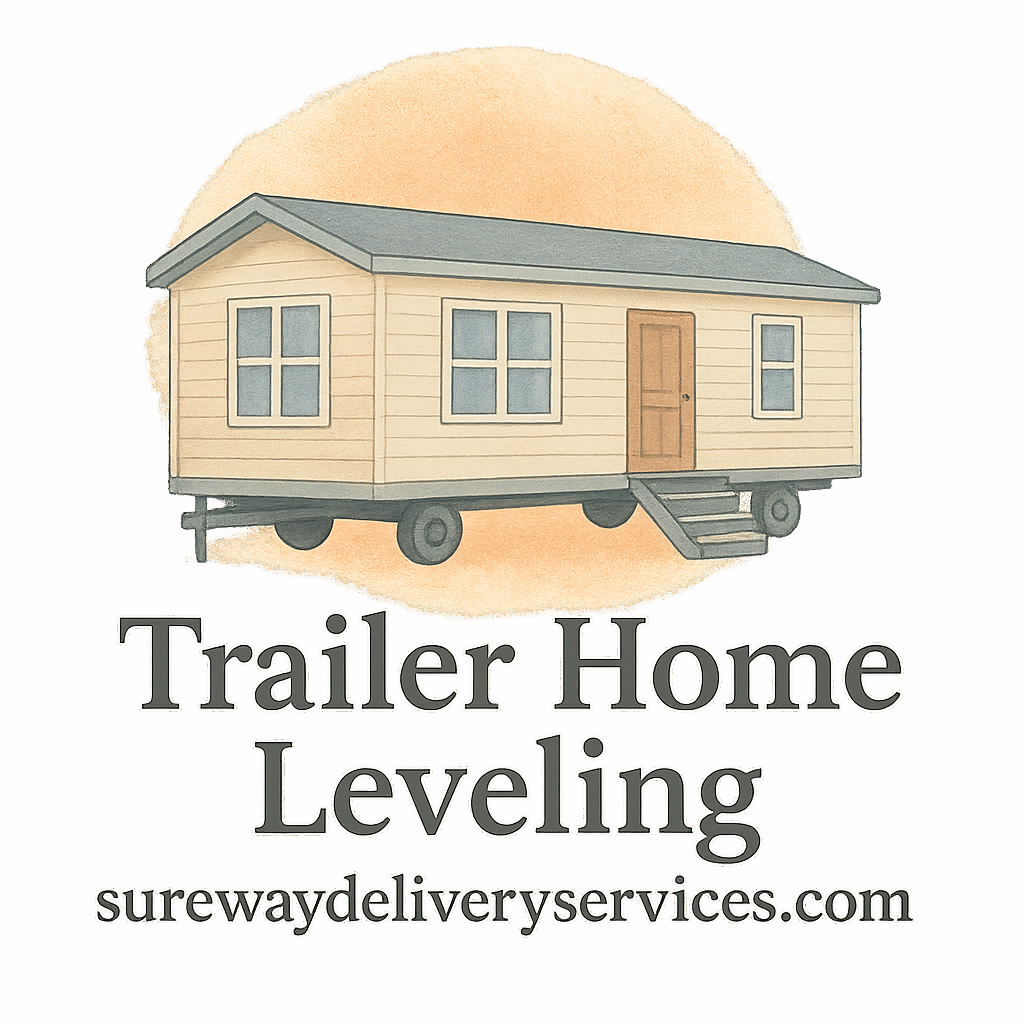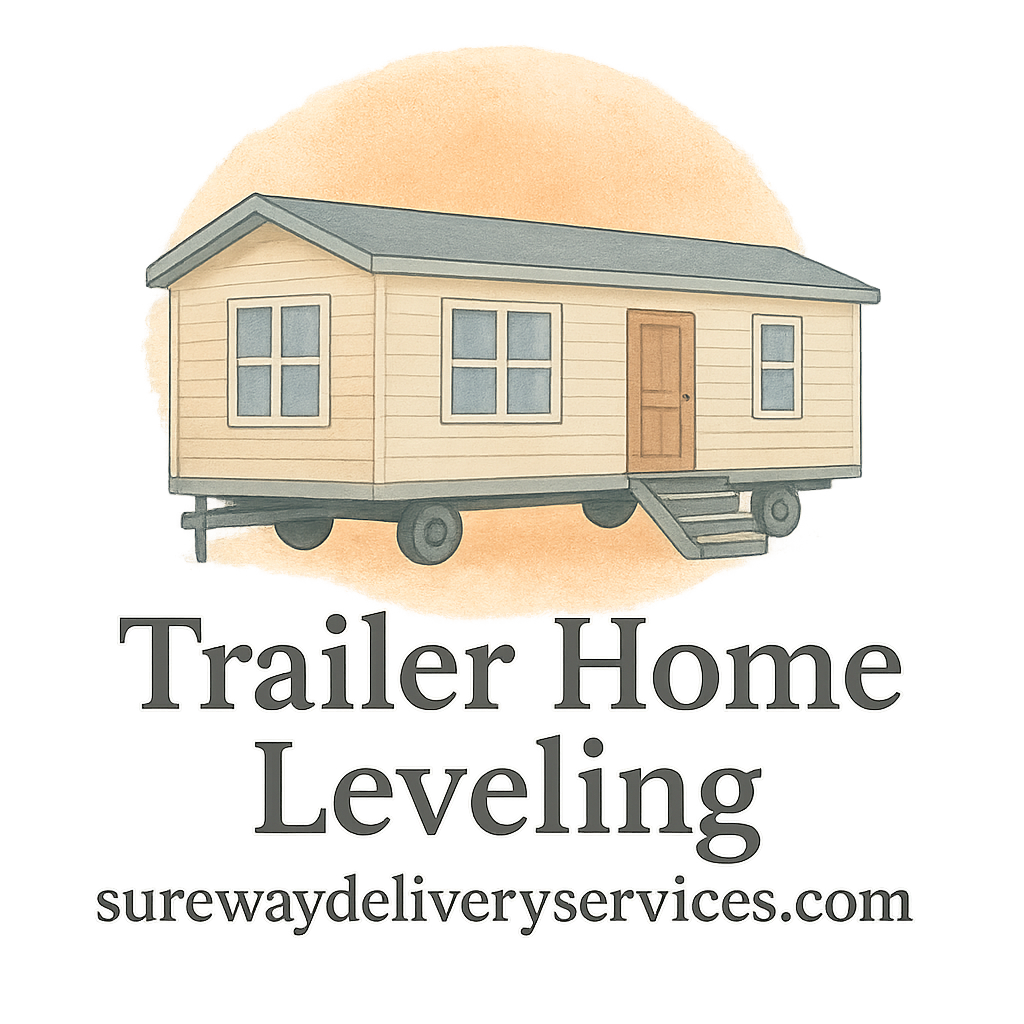Introduction
Leveling your trailer home isn’t just about keeping things looking tidy—it’s absolutely essential for safety, comfort, and longevity. Yet, a surprising number of people either neglect this task or make costly mistakes when attempting it. In this guide, we’re digging deep into 6 common mistakes to avoid in trailer home leveling and how to get it right from the start.
If you’re ready to keep your trailer home on the level—literally—read on. And don’t worry, we’ve got helpful internal resources to make it even easier.
Why Trailer Home Leveling Matters
Structural Integrity
An unlevel trailer home can stress the frame, cause the doors to jam, or even lead to cracking in the walls. Over time, these small shifts can create big problems that compromise your home’s safety and structure.
Comfort and Functionality
Ever noticed your cabinet doors won’t stay shut or water won’t drain properly? Yup, that’s often because of poor leveling. It affects everything from how your appliances work to how you walk across the floor.
To get started with leveling basics, check out our complete beginner’s guide to trailer home leveling.
Mistake #1: Ignoring Signs of an Unlevel Trailer
Common Signs to Watch For
One of the biggest mistakes is just not paying attention. If your doors won’t close right, windows are misaligned, or floors feel uneven—it’s time to check your trailer’s level.
For a full list of what to watch for, don’t miss our tag page on trailer leveling signs.
Consequences of Neglect
Ignoring these early signs can lead to warped frames, plumbing issues, and even serious foundation damage. Fixing it later will cost far more than handling it now.
Our annual inspection checklist can help you stay ahead of the game.
Mistake #2: Using the Wrong Tools for Leveling
Essential Tools You Actually Need
From bubble levels to hydraulic jacks, having the right tools is non-negotiable. Don’t eyeball it—get precise. Our guide on leveling tools and equipment breaks it all down.
How the Wrong Equipment Can Worsen the Problem
Improvising with car jacks or shims? Big no-no. That’s how you end up damaging the undercarriage or causing unsafe shifts in your trailer’s balance.
Explore smarter ways in our article on techniques and methods for trailer leveling.
Mistake #3: DIY Without Knowledge or Guidance
When DIY Is a Risky Move
We get it—you’re handy. But trailer home leveling isn’t like hanging shelves. Without experience, you might make costly mistakes or even injure yourself.
Explore trailer issues others have faced from DIY gone wrong.
Why Hiring a Pro Makes Sense
Professionals come with the tools, experience, and insurance to do the job right. Learn more about the benefits of hiring trailer leveling services and how to pick the right team.

Mistake #4: Not Budgeting Properly
Underestimating the Real Costs
People often forget to factor in equipment, materials, labor, and potential repairs. Leveling isn’t always cheap, but it’s far cheaper than fixing a collapsed frame.
Use our cost budgeting guide to build a smart plan.
Avoiding Overcharges with Smart Planning
Avoid getting ripped off by checking price-related tips and warnings and read customer reviews before committing.
Mistake #5: Skipping Regular Maintenance and Inspection
Importance of Scheduled Inspections
You can’t just level once and forget about it. Soil settles, moisture affects the ground, and homes shift. Regular checks ensure long-term safety.
See our maintenance and inspection tips to create your routine.
Preventative Measures for Long-Term Stability
Small efforts—like checking jacks or using moisture barriers—can save thousands in future repair costs.
Bookmark our tag on trailer maintenance for future reference.
Mistake #6: Choosing the Wrong Service Provider
Red Flags When Hiring a Leveling Service
Cheap prices with no insurance? Sketchy. No reviews or online presence? Run.
Check our vetted list of recommended trailer leveling services for trusted help.
How to Find Trusted Professionals
Ask for references, verify licenses, and compare service packages. Don’t just go with the first ad you see.
Success leaves clues—check out our success stories to see how others got it right.
Conclusion
Trailer home leveling isn’t rocket science—but it is something you’ve got to take seriously. By avoiding these six common mistakes, you’re not just protecting your home—you’re investing in comfort, safety, and peace of mind.
Want more insights on all things trailer homes? Dive into our full site at TrailerHomeLeveling.com and explore related topics like trailer tips, jack types, or detailed trailer setup.
FAQs
1. How often should I check the level of my trailer home?
At least once a year. For optimal results, follow our annual trailer home inspection guide.
2. Can I level my trailer home by myself?
You can, but it’s risky. Unless you’re well-versed with leveling tools and techniques, consider hiring a pro.
3. What are the signs that my trailer home is not level?
Look for slanted floors, sticking doors, and strange creaks. Our full list of signs can help.
4. What’s the average cost for trailer home leveling?
Depends on size, damage, and location. Use our cost guide for budgeting.
5. What tools do I need for trailer home leveling?
A bubble level, hydraulic jacks, and safety gear. Learn more on our tools page.
6. Is leveling part of regular trailer maintenance?
Absolutely. It’s a big part of maintenance routines and keeps everything safe and secure.
7. How do I choose a reliable leveling service?
Check credentials, reviews, and customer recommendations. Avoid the cheapest option unless they’re verified.


